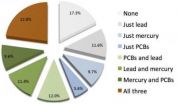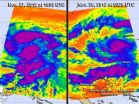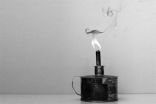The recommendations, published in the November 2012 issue of Radiology, were developed at the Radiation Dose Summit, organized by the National Institute of Biomedical Imaging and Bioengineering (NIBIB). The summit included more than 100 medical physicists, radiologists, cardiologists, engineers, industry representatives and patient advocates. The proceedings, held in Bethesda, MD in early 2011, covered currently understood risks of radiation exposure from CT scans, set priorities for future research, and called for changes to industry practices.
"The number of CT exams in the U.S. has increased by about 10 percent each year over the past decade," said John Boone, UC Davis professor of radiology and lead author of the Radiology article. "This trend underscores the importance of developing a better understanding of the health risks of radiation exposure versus the benefits of enhanced diagnosis."
The experts conceded that despite widespread public concern about radiation risks, the biologic effects from medical imaging tests are not entirely understood. Most direct evidence comes from the effects of instantaneous, high-dose, whole-body exposures due to industrial accidents and from survivors of the atomic bombs in Hiroshima and Nagasaki, Japan. Whether these findings can be extrapolated to people exposed to occasional and much smaller dosages applied to only parts of the body is uncertain.
"The standards regarding 'safe levels' of radiation were designed for workplace safety and are very conservative," said Boone. "We don't know whether the established thresholds are really meaningful for exposure from medical testing."
The experts pointed out that because there is a high background incidence of cancer worldwide, the small incremental increase in cancer that may be attributable to low doses of radiation from medical imaging is extremely difficult to ascertain. They stated that national and international registries that track cancers and patient exposures to medical radiation may one day make it possible to conduct large epidemiological studies that could help make such associations.
"In reaction to media coverage of radiation overexposure cases, some patients refuse to undergo medical imaging procedures," said Boone. "Yet for almost all patients, the risks of foregoing a needed medical procedure far outweigh any potential radiation-associated risks."
Even accurately recording patient exposures of radiation from medical imaging is extremely difficult, according to the authors. Although it is easy to ascertain how much radiation a machine administers during an imaging study, the amount actually received by a patient depends on various factors including body size. For example, because of differences in body mass, children and small adults can receive a dose of radiation two to three times that of larger people, even when the dose administered is the same.
Other factors, such as whether the patient lies on a moving or stationary table, also affect the radiation dose received. Federally sponsored research is needed to develop methods to more accurately measure patient exposures from different types of CT scans, the authors suggested.
Summit participants also discussed the role of human error in CT scanning, which has resulted in widely publicized instances of radiation overexposure. They point out that CT operators frequently are responsible for several machines made by different manufacturers, each of which may utilize dissimilar nomenclature and control consoles, thereby increasing the chance for error.
"For some scanners, you turn a dial to the right to get a larger dose, and for others, turning it the same way gives a smaller dose," said Boone. "There are so many differences in current CT scanners, it can be like driving a car with the brake pedal on the left in the morning, then with the brake on the right in the afternoon."
CT scans should be built more like cars, he argued, which may have different exteriors, dashboards and seat coverings but are standardized across the industry so that they are driven the same way, making driving errors unlikely to occur when switching from one kind of car to another.
The experts call for academic and professional radiology societies, as well as industry trade organizations, to exert pressure on CT manufacturers to standardize nomenclature and control consoles to help avoid mistakes.
The experts also considered "wasteful imaging" -- tests that have little impact on patient diagnoses or outcomes -- resulting in unnecessary radiation exposures. Wasteful imaging can arise if physicians are unaware of a patient's prior tests or don't really know whether a scan will benefit a patient with certain signs and symptoms. In addition, physicians may order tests they know are only marginally useful to avoid accusations of negligence in a possible future lawsuit. The experts recommend use of information technology to develop national imaging and radiation exposure registries, as well as standardized protocols that guide physicians on the use of optimal imaging modalities for different clinical problems.
The University of California recently provided grants to all five of its medical schools to develop methods for more accurate measures of radiation exposure from CT scans and to build protocols that improve diagnostic information and reduce radiation risks. According to Boone, the tools under development are very powerful and will move the UC system toward achieving the goals outlined during the Radiation Dose Summit.
INFORMATION:
The article is titled, "Radiation exposure from CT scans: How to close our knowledge gaps, monitor and safeguard exposure -- proceedings and recommendations of the Radiation Dose Summit, sponsored by NIBIB, February 24-25, 2011."
The other authors of the article are Steven Seltzer of Brigham and Women's Hospital and Harvard Medical School in Boston, Mass., William Hendee, from the Medical College of Wisconsin in Milwaukee, and Michael McNitt-Gray from the David Geffen School of Medicine at UCLA.
UC Davis Comprehensive Cancer Center is the only National Cancer Institute-designated center serving the Central Valley and inland Northern California, a region of more than 6 million people. Its specialists provide compassionate, comprehensive care for more than 9,000 adults and children every year, and access to more than 150 clinical trials at any given time. Its innovative research program engages more than 280 scientists at UC Davis, Lawrence Livermore National Laboratory and Jackson Laboratory (JAX West), whose scientific partnerships advance discovery of new tools to diagnose and treat cancer. Through the Cancer Care Network, UC Davis collaborates with a number of hospitals and clinical centers throughout the Central Valley and Northern California regions to offer the latest cancer care. Its community-based outreach and education programs address disparities in cancer outcomes across diverse populations. For more information, visit cancer.ucdavis.edu.
END




